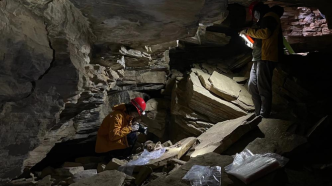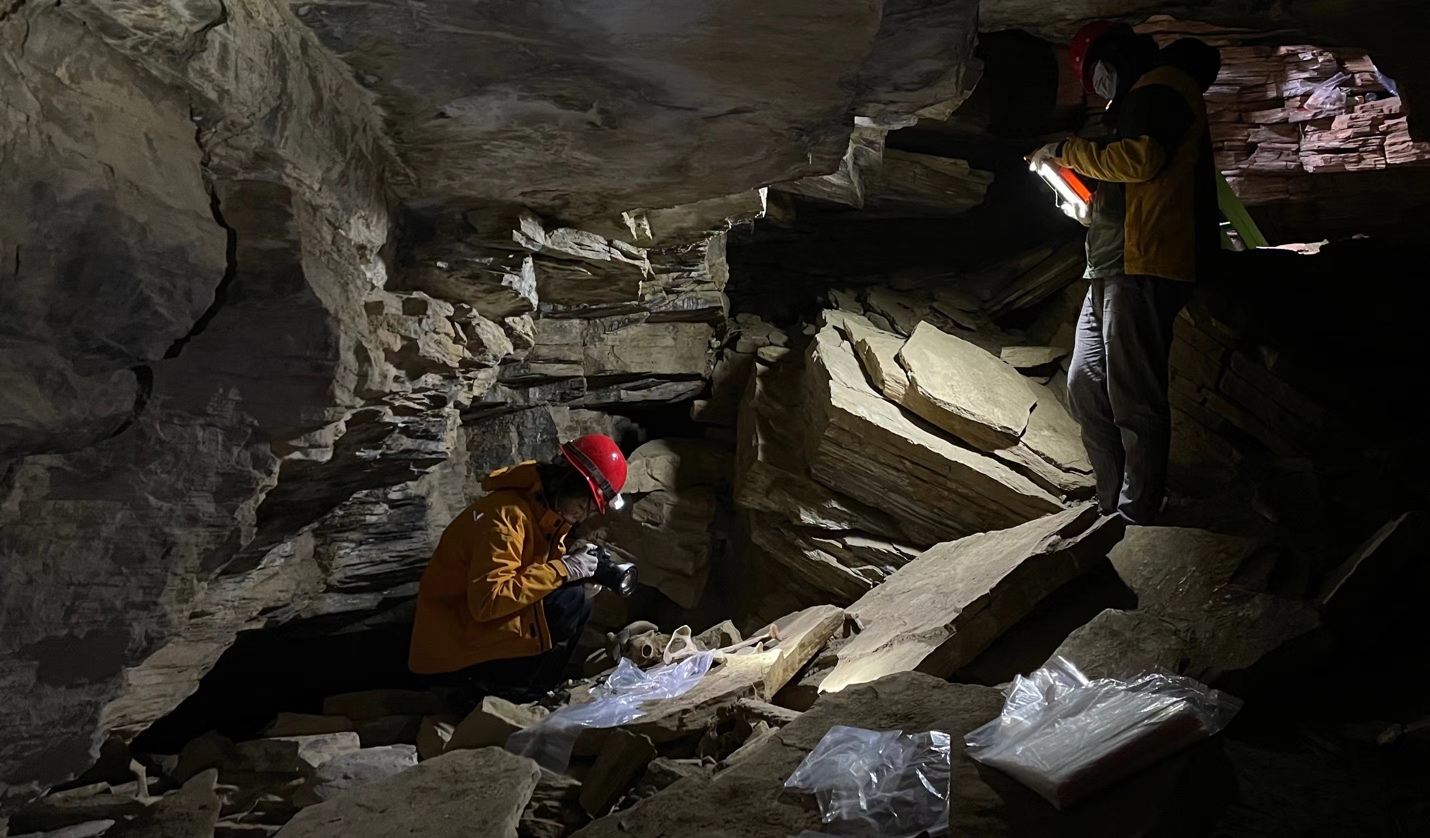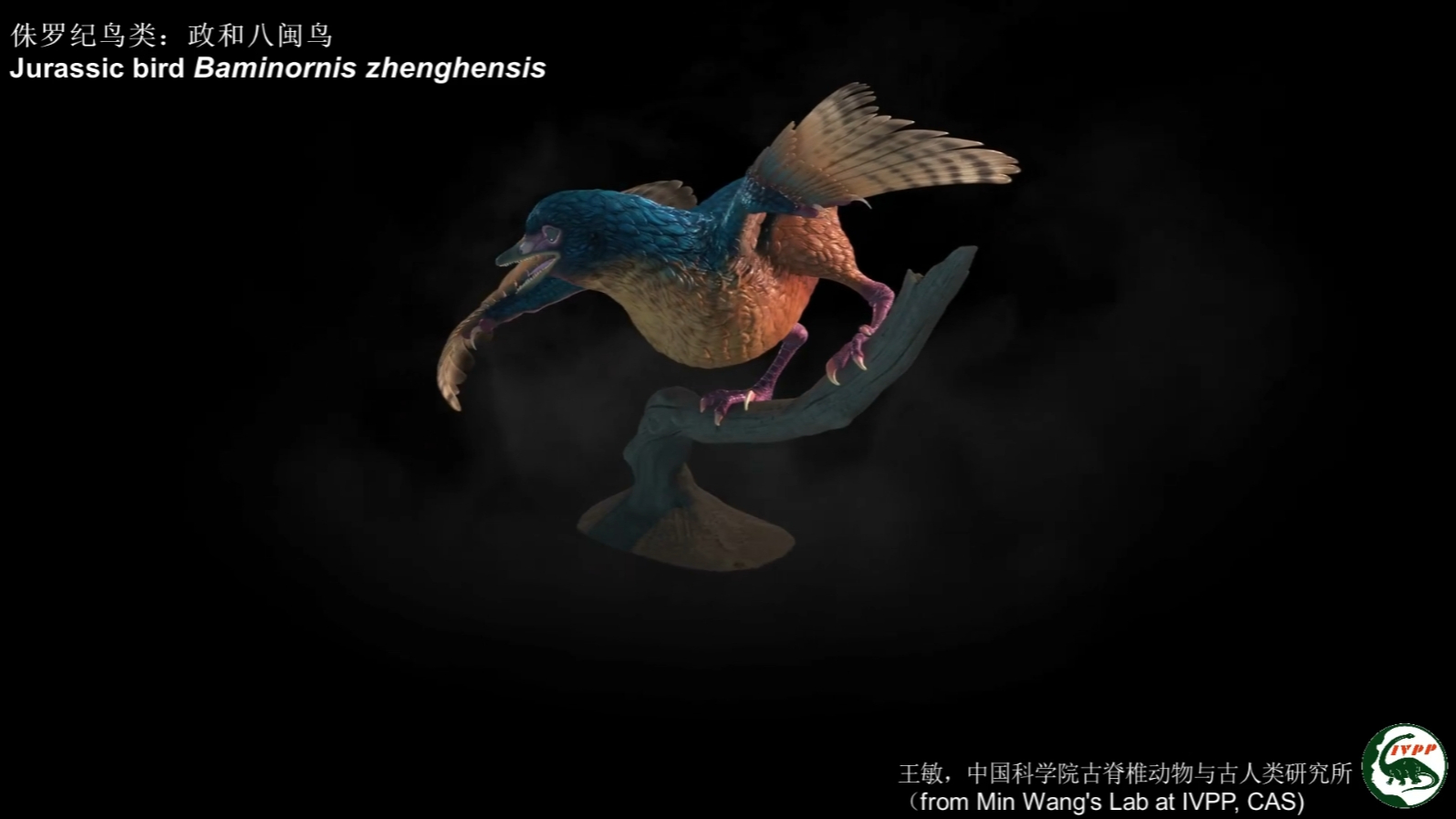
The average altitude of the Qinghai-Tibet Plateau is more than 4,000 meters. It is called the "roof of the world". Because of its low oxygen, cold and other harsh climates, it is one of the most challenging areas for human survival on earth. When modern people set foot on the Qinghai-Tibet Plateau and settled permanently is the most concerned issue.
In the past ten years, although the archaeological research on the Qinghai-Tibet Plateau has made considerable progress, these studies are often limited to the framework of traditional disciplinary explanations, and cannot directly trace the origin of ancient populations on the Qinghai-Tibet Plateau and the complex evolutionary history of populations.
On March 17, the open-access international academic journal "Science Advances" published a paper online, conducting in-depth research on the genetic characteristics and communication history of ancient populations in different regions of the Qinghai-Tibet Plateau since 5,100 years ago, revealing nearly 5,000 The history of complex human interaction and exchange within and outside the Qinghai-Tibet Plateau over the years.
The research was completed in collaboration with Fu Qiaomei's team from the Institute of Vertebrate Paleontology and Paleoanthropology, Chinese Academy of Sciences, the Institute of Cultural Relics Protection of the Tibet Autonomous Region, the Archaeological Science Center of Sichuan University, and the School of Cultural Heritage of Northwest University.

Researchers conducted archaeological excavations in a tomb at the Dingqiong site in the Shigatse region of the southwestern Qinghai-Tibet Plateau.
The earliest published sample carrying the unique genetic components of the Qinghai-Tibet Plateau
Previous studies based on ancient DNA in the Mustang area of Nepal have proved that the Nepalese ancient population 3,400 years ago shared similar genetic components with populations from various regions of the Qinghai-Tibet Plateau, but the situation in earlier periods is unclear.
Fu Qiaomei's team's research shows that the unique genetic components of the modern Tibetan population have existed in the ancient populations of the entire Qinghai-Tibet Plateau since at least 5,100 years ago, and have good genetic continuity.
Among them, the 5,100-year-old population from the Zongri site in the Gonghe Basin in the northeast of the Qinghai-Tibet Plateau is the oldest human sample published so far that carries the unique genetic elements of the Qinghai-Tibet Plateau.
The latest published paper shows that the unique genetic composition of the Qinghai-Tibet Plateau population is formed by the mixture of two different genetic components in a ratio of about 4:1, of which about 80% of the genetic components are related to the population in northern East Asia 9,500-4,000 years ago, About 20% of the genetic composition was derived from an unknown ancient population. This result suggests that the main composition of the Qinghai-Tibet Plateau population is likely to be related to the expansion of the population in northern East Asia during the Neolithic Age, and the migration and mixing of the population driven by it.
Previous archaeological research on the 5,500-4,000 people at the Zongri site believed that the people at the Zongri site mainly had contact with the millet farming people in the upper reaches of the Yellow River through trade, which was a cultural exchange without significant population growth. migrate.
However, the research by Fu Qiaomei's team showed that there was more than just cultural exchange between the two populations. At least 4,700 years ago, the population at the Zongri site had been mixed genetically, showing that they were influenced by the ancient northern population in the Yellow River Basin .
This is quite consistent with the factors of the Majiayao culture observed in the Zongri site 5,000 years ago and later observed in archaeology. These latest genetic findings further refine and support inferences from previous archaeological studies.

The research involves the age and geographical distribution of ancient populations on the Qinghai-Tibet Plateau.
Changes in the genetic composition of populations associated with the rise and fall of dynasties
The Tubo Dynasty in the 7th century AD was the most glorious chapter in the history of the Qinghai-Tibet Plateau.
Research by Fu Qiaomei's team shows that as early as around the 4th century AD, people with genetic components from the southern plateau had replaced the natives of Nagqu; and from the 6th to the 9th centuries AD, the people in Nagqu retained the same period of the Shannan population. genetic component. This pattern shows that the genetic infiltration of the southern plateau population into the northern Tibetan plateau population was long before the rise of Tubo, and the expansion of the Tubo dynasty also left obvious genetic influences in the Nagqu area.
The study also found that around the 9th century AD, the population in the southern plateau was influenced by the population in other areas of the plateau, and there were fluctuations in genetic composition, which was the stage of the decline and collapse of the Tubo Dynasty.
Studies have shown that since more than 3,000 years ago, the vast area of the southern Qinghai-Tibet Plateau, including the entire Yarlung Zangbo River Basin, and the ancient populations of the Himalayas have a high degree of genetic similarity.
The above findings suggest that the Brahmaputra valley was an important migration corridor in the first millennium BC, which provides an interesting genetic background for analyzing the archaeological convergence of the Brahmaputra valley in the early metal age.
Although the ancient populations of the Qinghai-Tibet Plateau shared similar genetic components, since 2,500 years ago, the ancient populations of the Qinghai-Tibet Plateau have emerged in different regions with a relatively obvious group structure, which can be divided into three main populations: 1) based on the Gonghe Basin and Yushu The "northeast" plateau population centered on the plateau; 2) the "southeastern" plateau population centered on Naqu and Qamdo; 3) the "southwestern" plateau population centered on Shigatse, Shannan, and Lhasa.
Among them, the "southwestern" plateau population has the largest spatial span of genetic components, mainly distributed along the Yarlung Zangbo River valley, extending from the westernmost Ngari region to the southeastern Nyingchi region, with the largest scope of influence.
Genetic Evidence for the Plateau Silk Road
Fu Qiaomei's team's research shows that in the past 5,000 years, although the overall genetic composition of the ancient populations in the plateau area is relatively continuous, there are still some ancient populations on the plateau that are closely related to the ancient populations outside the plateau.
Individuals from the 5th century AD and 12th century AD individuals from the Shigatse area in the southern plateau showed signs of interaction with ancient populations in Central Asia.
Mitochondrial and nuclear genome studies have shown that the impact of interaction with Central Asian populations is more pronounced in the Ali region in the west.
The Qamdo and Nyingchi ancient populations from 2,800 to 2,000 years ago showed a genetic connection with the ancient populations in southern East Asia.
In addition, modern Tibetan populations are more genetically influenced by East Asian low-altitude populations than ancient populations. This shows that in the past few hundred years, populations in low-altitude areas of East Asia have continued to have a large impact on populations on the Qinghai-Tibet Plateau, and extensive gene exchanges have occurred, which has profoundly shaped the genetic profile of modern Qinghai-Tibet Plateau populations.
In addition, mitochondrial research also shows that the maternal genetic connection between the Tibetan population and other northern populations has been different in different periods over the past 4,000 years: there was a connection about 4,000-3,000 years ago, and this relationship was about 3,000 years ago. -1100 showed a downward trend, and then strengthened after about 1100 BP.
The above-mentioned studies reveal the complex history of human communication within and outside the plateau with definite genetic evidence. This is also consistent with the facts of trans-Himalayan interaction and plateau Silk Road revealed by archaeological research from material culture.
The frequency of the EPAS1 gene increases rapidly to adapt to the hypoxic environment at high altitude
Relevant studies have shown that the haplotype of the EPAS1 gene carried by the modern Tibetan population may come from the Denisovans, which is a key gene for their adaptation to the low-oxygen environment. However, the process of natural selection for this gene, and how its gene frequency changes over time, has been poorly understood.
Fu Qiaomei's team conducted a retrospective study on the genetic history of this gene and found that it first appeared in the form of homozygosity in the Zongri site population in the northeastern Qinghai-Tibet Plateau 5,100 years ago. This indicates that the mutant EPAS1 gene may have originated from the common ancestor of all plateau paleopopulations.
The study also showed that in the past 3,000 years, especially in the past 700 years, the gene frequency of the EPAS1 gene has increased rapidly in the Qinghai-Tibet Plateau population, but this increase has nothing to do with population migration, which indicates that the increase in the frequency of the EPAS1 gene is due to strong positive selection to help people on the Qinghai-Tibet Plateau adapt to the plateau environment.
In addition, Fu Qiaomei's team combined more research results of the mitochondrial genome in the Ali area and published it online in the international academic journal "Journal of Genetics and Genomics" (Journal of Genetics and Genomics), and explored by tracing the maternal genetic history of the Qinghai-Tibet Plateau population. Their communication dynamics with the people around them.


